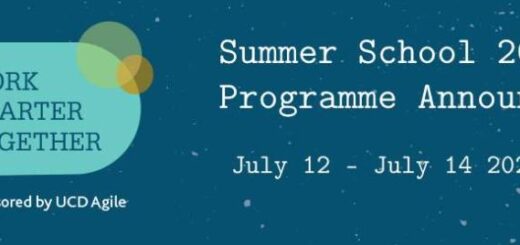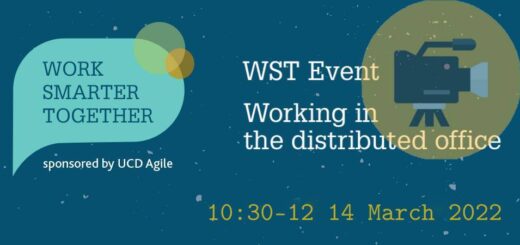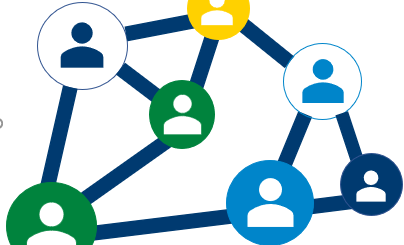Facilitating Meetings for Engaged Communities of Practice
This article is aimed at anyone who finds themselves with the responsibility to run a CoP meeting, perhaps for the first time. If this is you, read on for some practical hints and tips.
Each Community of Practice is unique, extending to how they operate and run meetings. For some, there is a key individual or group of people who take responsibility for driving the meeting schedule and the meetings themselves. For others, there may be a rotating responsibility that offers all members of the community the opportunity to lead on a meeting or gathering.

Colleagues giving a fist bump
The most important piece of advice is to make sure you are clear on the purpose of the meeting or gathering. This will directly influence your facilitation approach. To this end, two examples are used below, with very different purposes.
Example 1:
Here are some of the things you might want to consider if the meeting is an opportunity for people to get to know each other better, perhaps the goal is identifing what the members individually bring to the community:
- How can you ensure that everyone recognises what they have to offer in this community of practice?
- To do this you will need to consider both the ‘needs’ and the ‘offer’ of individuals.
- A simple way to do this is to start with questions like ‘what are you hoping to get out of this group?’ and ‘what specific challenges/opportunities are you facing that you hope this group might help you with?’
- The conversation that follows will naturally start to identify where individuals have something to offer that addresses those needs.
- How can you ensure that everyone has the opportunity to contribute? Not everyone is naturally inclined to speak up, but it is important to create an environment in which they feel comfortable to
- Lead by example. Either yourself or someone you prepare should go first, setting the right tone for the meeting and providing the right kind of information. With this as an example, other participants are more likely to be confident in making an effective contribution
- If you are working with a small group, you might decide to ask each person to speak individually. It can be useful to take notes on a whiteboard as the discussion flows, so that everyone has a shared view of the conversation as it unfolds. These notes then serve as prompts for others as they start to contribute
- If you are working with a large group, you might want to ask for individual contributions through post-its – either physically or digitally depending on the nature of your meeting. Affinity brainstorming is a useful technique to consider here.
- Discussion can then take place in small breakout groups with one person nominated to report back to the rest of the room
- In both cases, it can be useful to let people know in advance what you will be asking them to contribute. This offers them time to think about what they might say, without necessarily adding the overhead of unnecessary ‘pre-work’. In this example it might be that you will ask them to speak about their role or why they want to be part of this community
Example 2:
Here are some of the things you might want to consider if the meeting is an opportunity for people to showcase something they have done:
- The people presenting or demonstrating their work may or may not have presented in front of a group before. Particularly for less experienced presenters it will be helpful for you to check in with them in advance so they know what to expect from you on the day. Agree with the presenter how you will manage the meeting. For example, you might check with them if they are comfortable being interrupted, or would prefer to get through their presentation before opening the floor for questions
- At the start of the session, do a brief introduction so participants know what to expect – what is the purpose and context for what they are about to be presented?
- Also ensure all participants are clear on the process. When will questions be posed (during/end)/ How (interrupt/raise hands/use zoom chat)?
- Come prepared with questions you might pose yourself in case there are not a lot of questions coming from the room. Often, when the facilitator kicks off the questions this can lead to more follow up questions from participants. Think particularly about what kinds of questions you think participants might have that could get the conversation started
Planning your CoP’s approach to streamlined meetings
If you are starting a new CoP or are part of a community that wants to review its approach to meetings, you might find it useful to run a ‘streamlining meetings’ workshop with your group. You can find more information on this as well as links to useful resources for streamlining meetings and useful checklists like DO Streamlining Meetings Checklist ; DO Streamlining Meetings Health Check and DO Streamlining Meetings: Running the workshop along with LinkedIn learning resources here.



